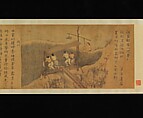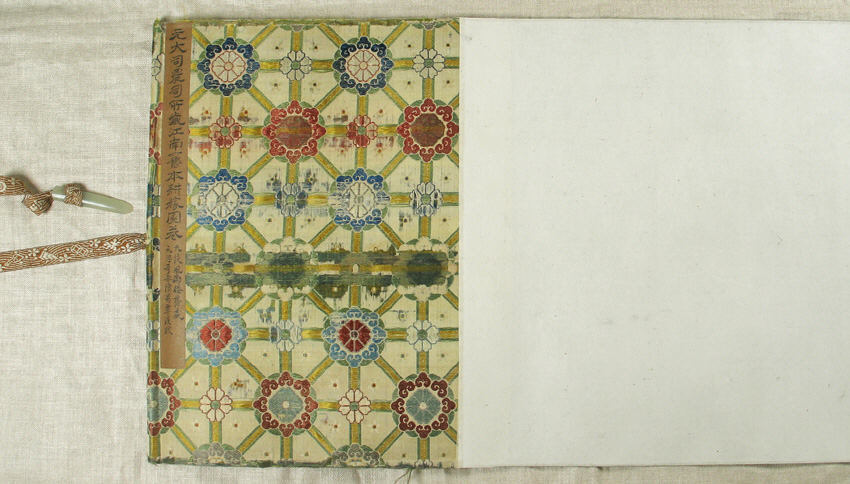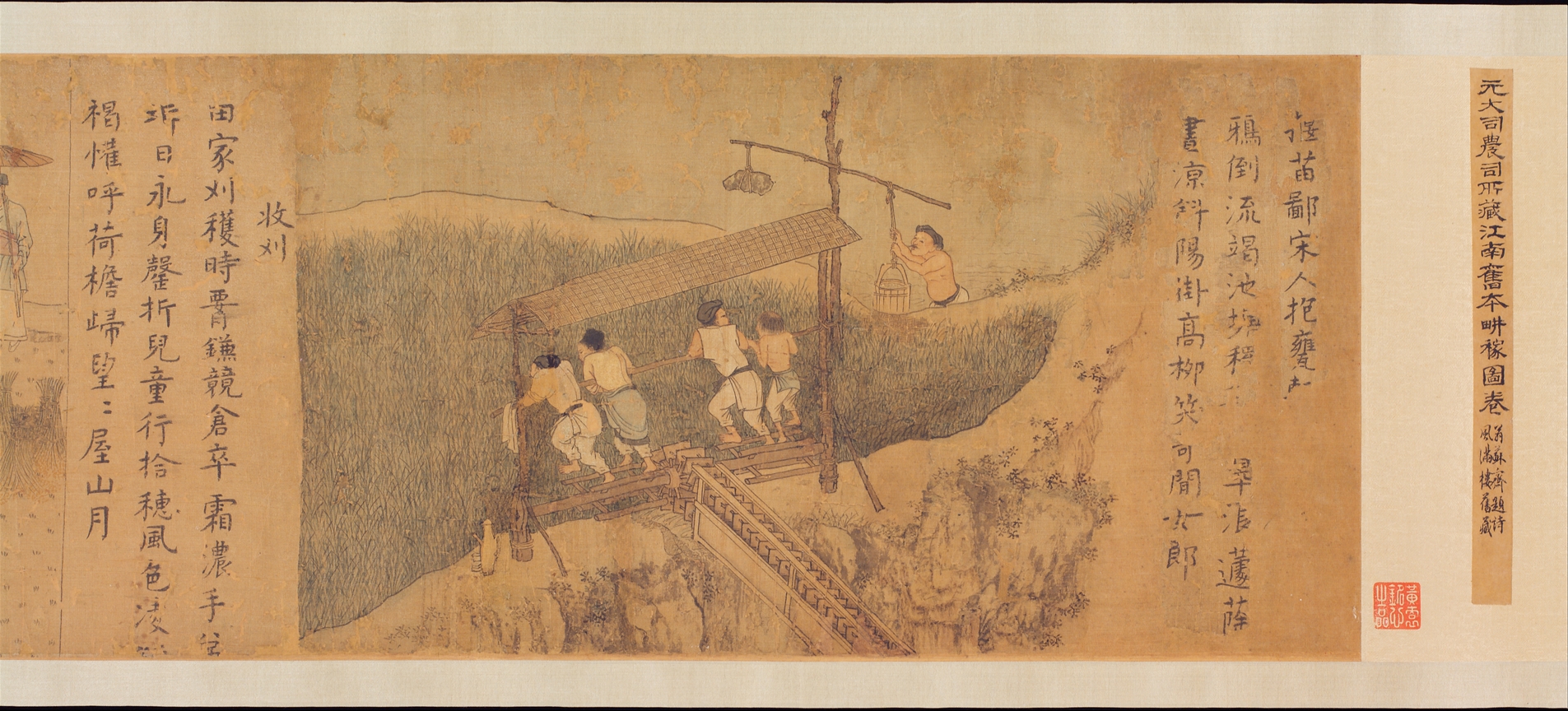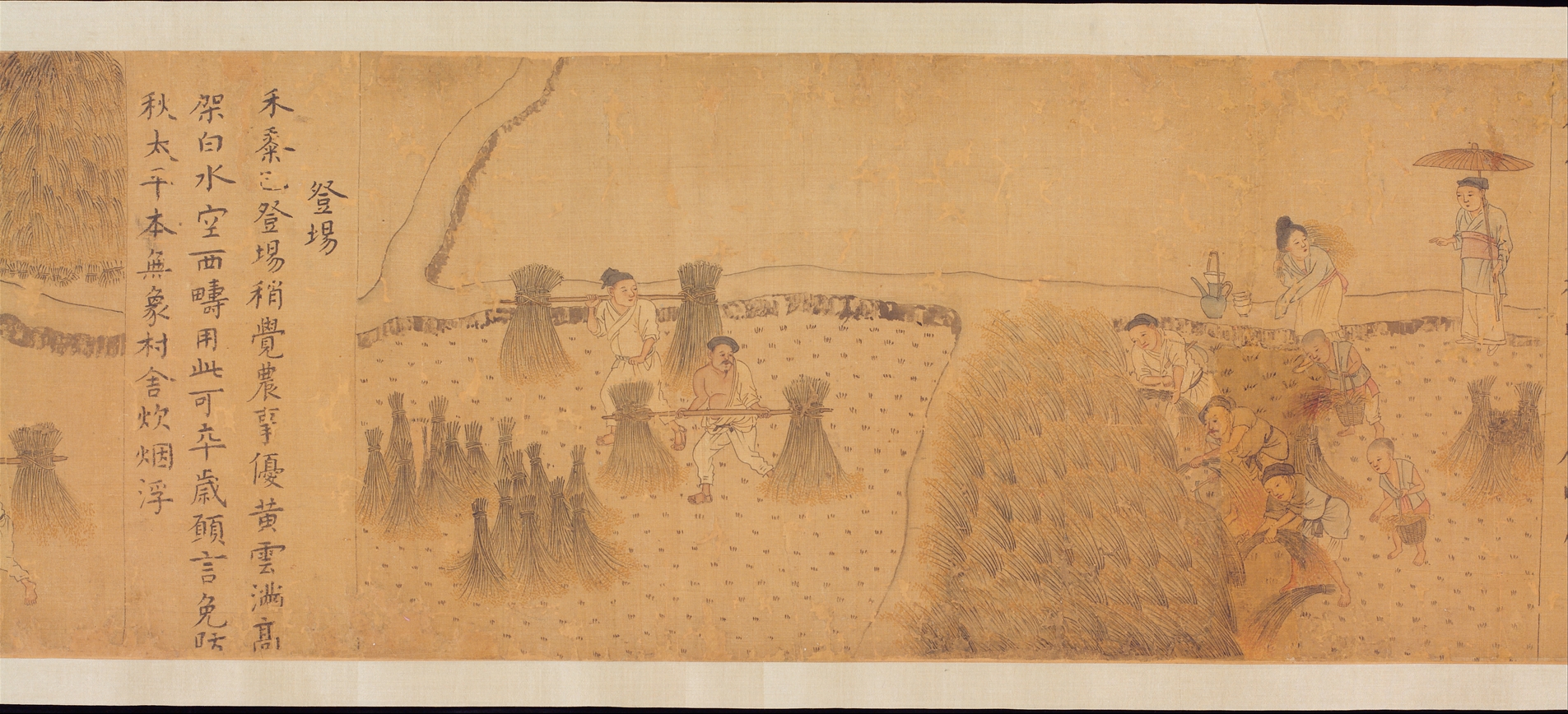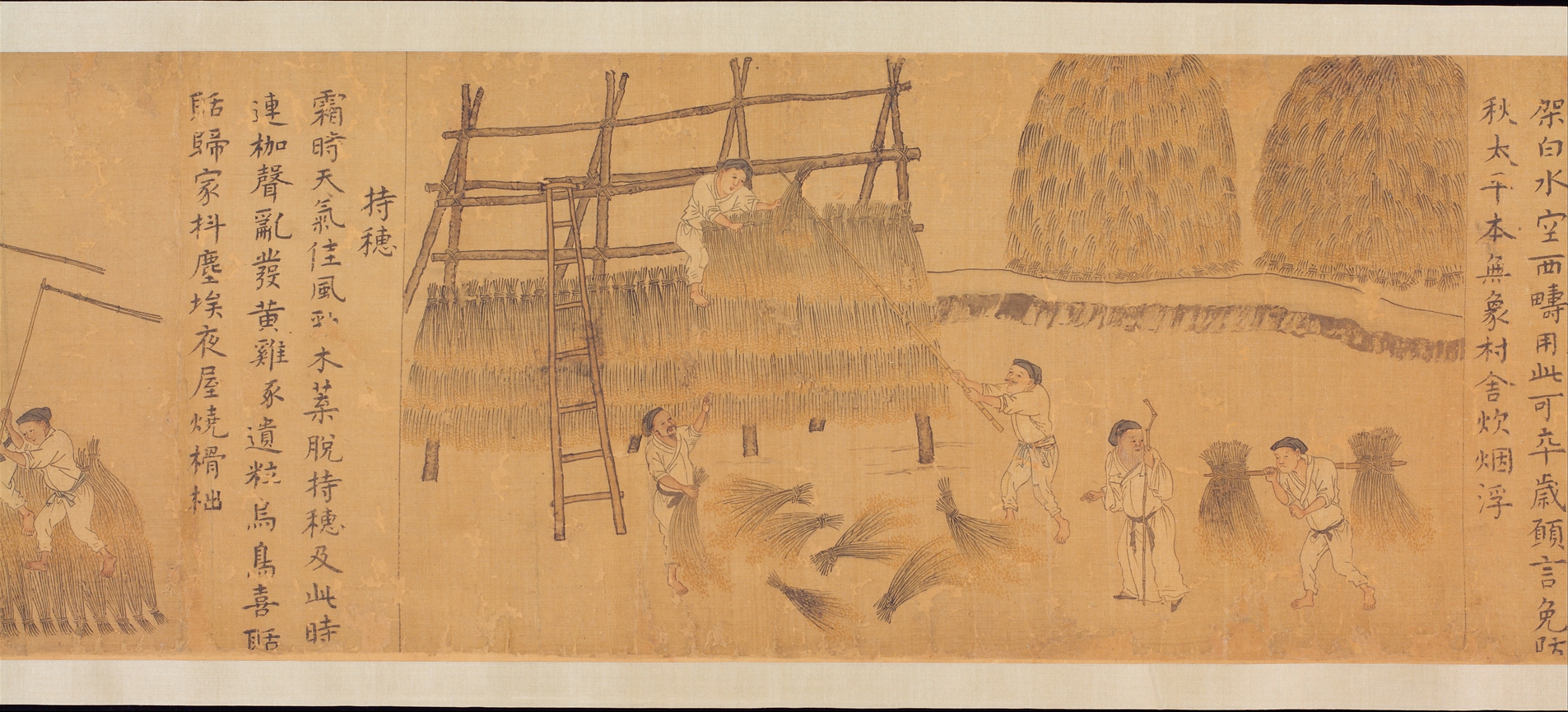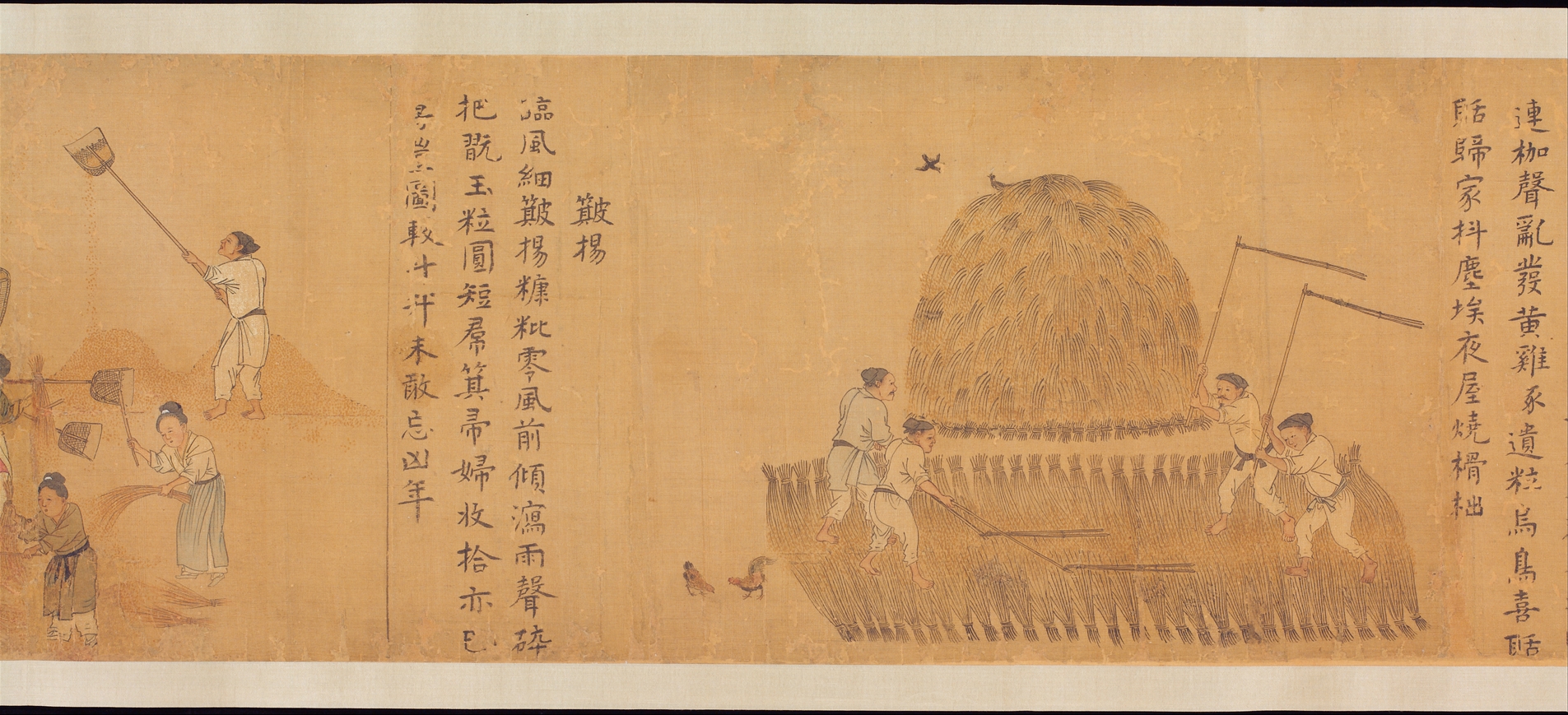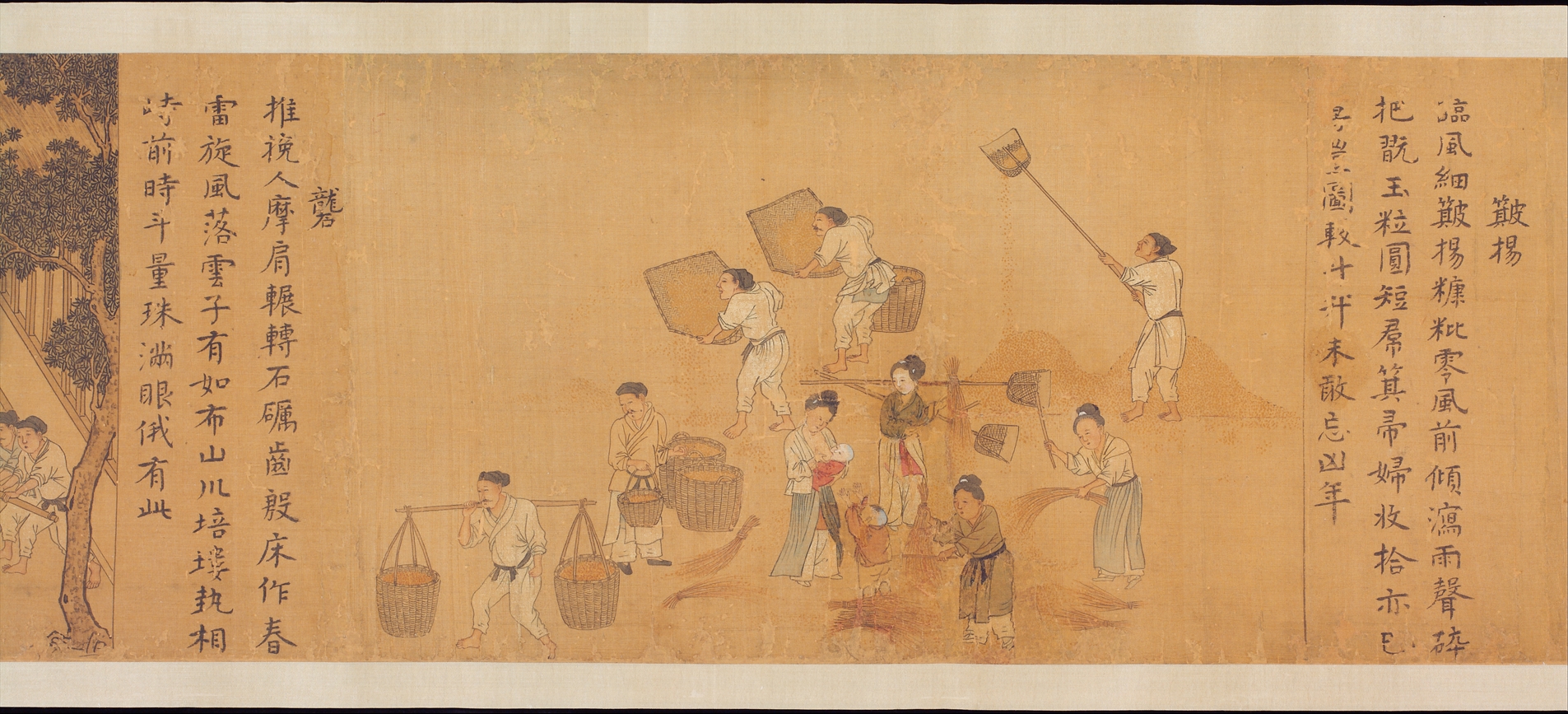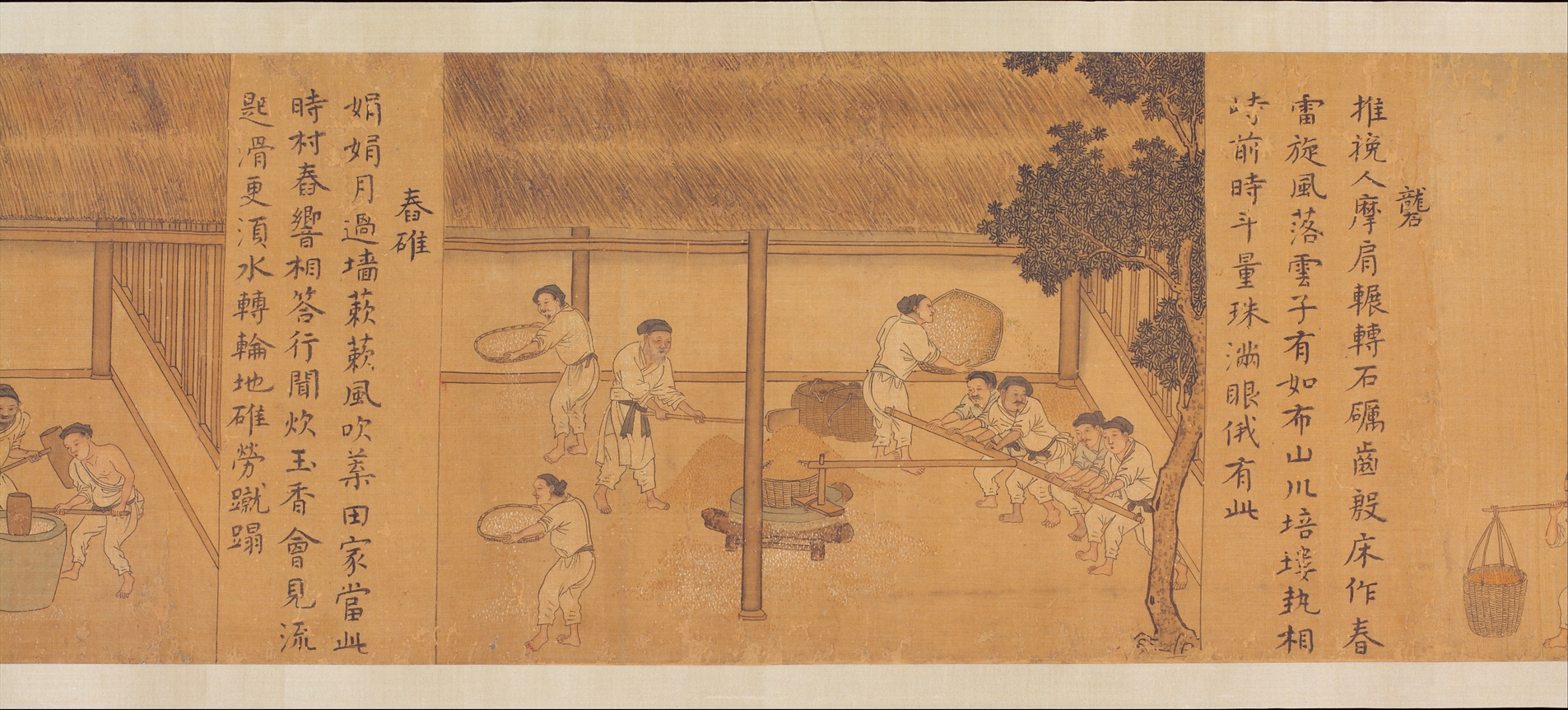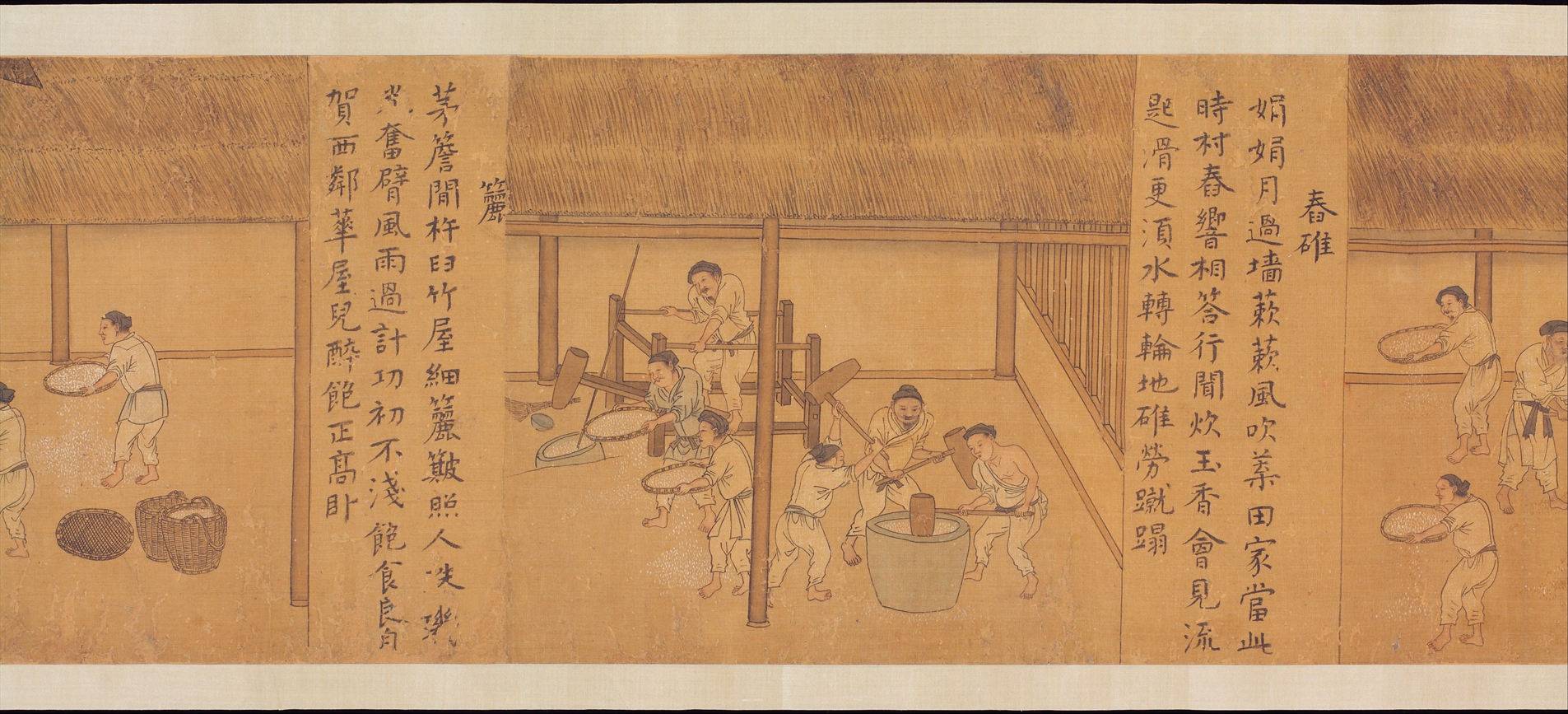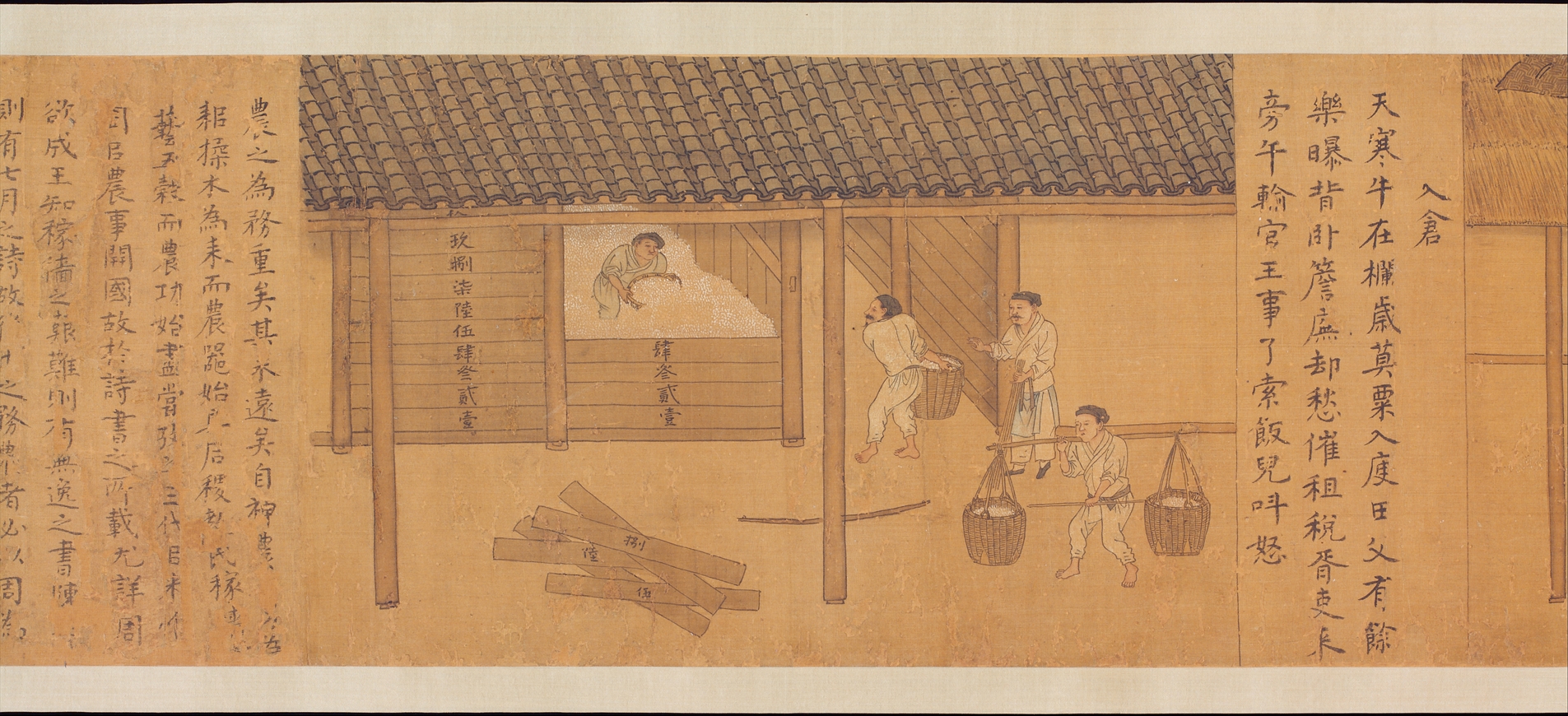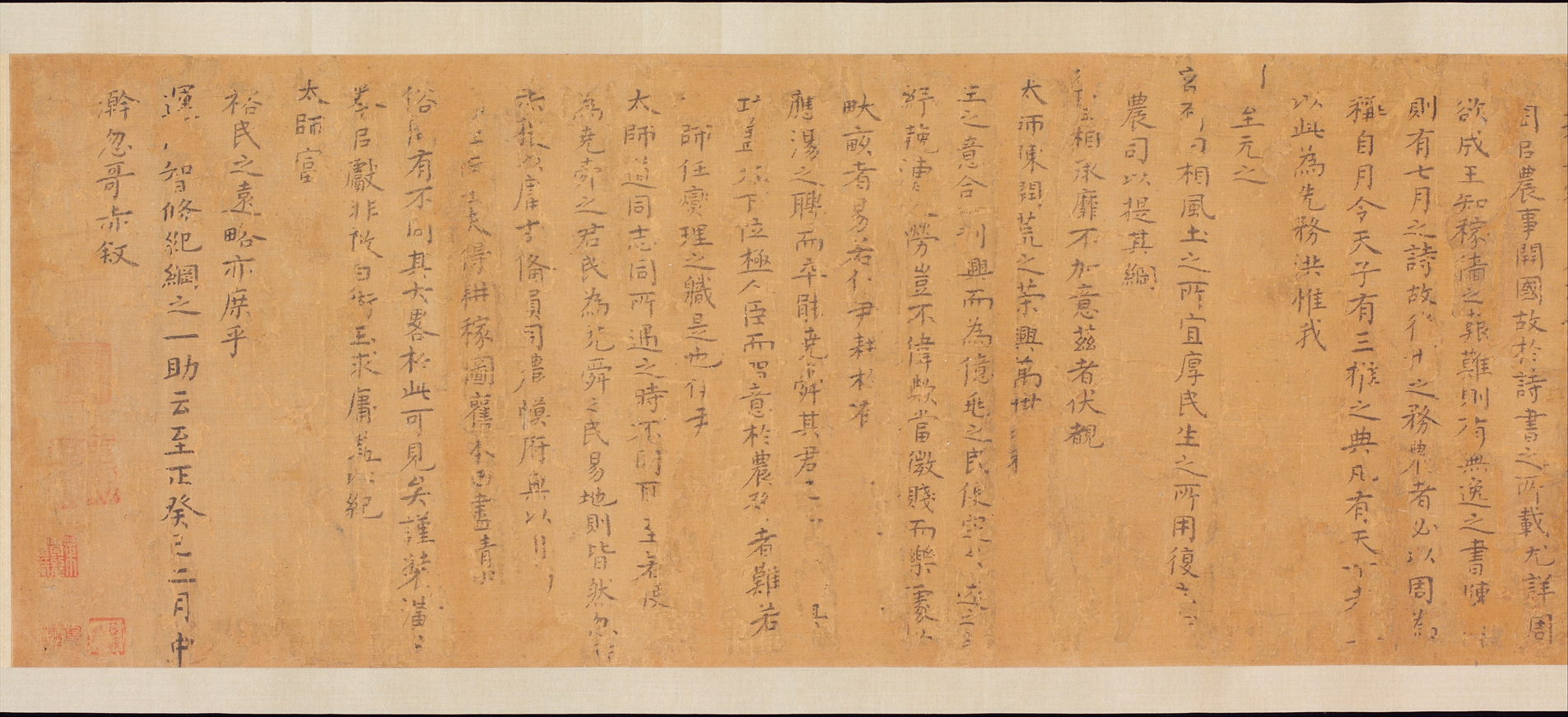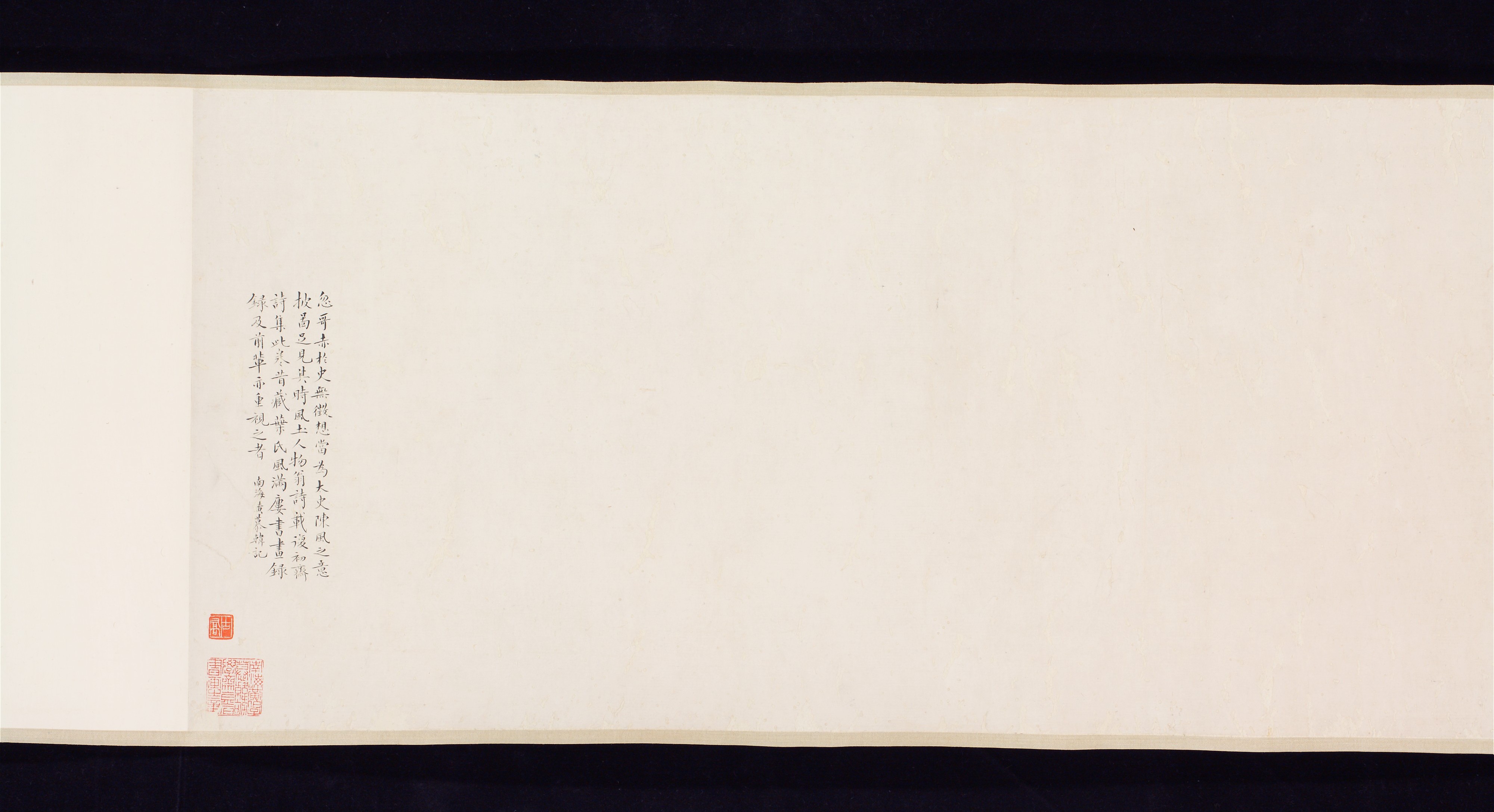Rice Culture, or Sowing and Reaping
Not on view
Rice Culture depicts China's most fundamental economic activity: the cultivation and harvesting of rice. It is based closely on a set of texts and illustrations first created by the Southern Song court painter Lou Shou (1090–1162). The scroll, which preserves the final nine scenes from this series, bears an inscription, dated 1353, by a Mongolian named Hugechi that states that, after he acquired this painting, he had it remounted and presented it to the Grand Preceptor as a resource for establishing policy.
The work not only documents the continuation of the Song-style court painting tradition but demonstrates how Mongol officials, in spite of their nomadic heritage, had come to appreciate both the fundamental nature of agriculture in Chinese society and its importance in sustaining the fiscal health of the dynasty.
Due to rights restrictions, this image cannot be enlarged, viewed at full screen, or downloaded.
This artwork is meant to be viewed from right to left. Scroll left to view more.
